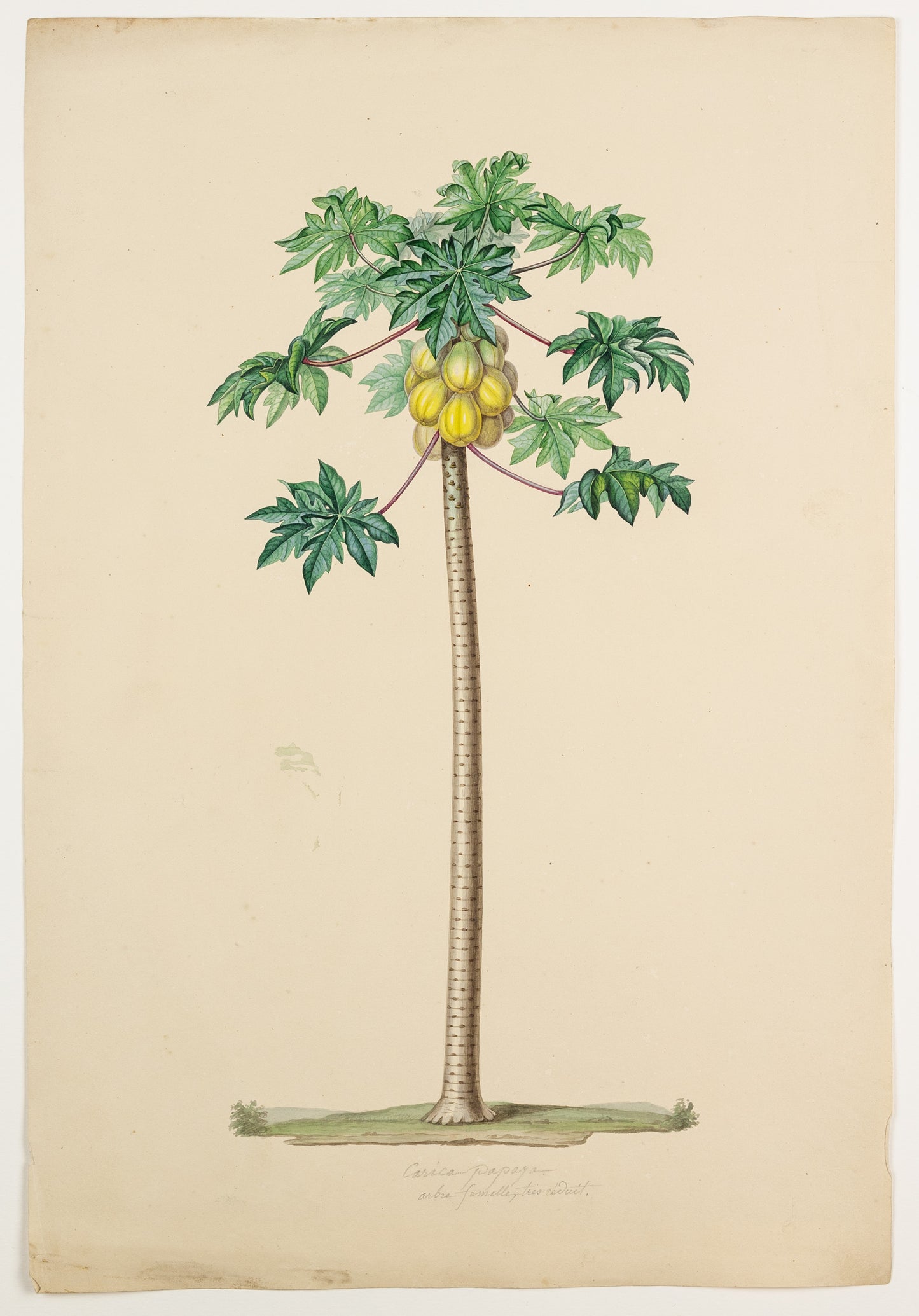from: Poiteau & Turpin Superb Botanical Drawings including varieties from the West Indies
PIERRE JEAN FRANÇOIS TURPIN (FRENCH, 1775 – 1840). The Pawpaw Tree.
PIERRE JEAN FRANÇOIS TURPIN (FRENCH, 1775 – 1840). The Pawpaw Tree.
Couldn't load pickup availability
PIERRE JEAN FRANÇOIS TURPIN (FRENCH, 1775 – 1840)
“Papaya Sativa The Pawpaw Tree”
Preparatory drawing for F.R. Tussac. Flore des Antilles, ou histoire générale botanique, rurale et economique des végétaux indigènes des Antilles.
Paris: chez l’auteur, F. Schoell et Hautel, 1808–1827. Vol. 3, Plate 10
Watercolor and pencil on paper
Paper size:
Tussac described this tree:
“The cultivated papaya tree is native to the East Indies; it was brought to the Antilles, where it has become so well naturalized and multiplied, that it can be regarded as indigenous... The large, elegantly cut leaves of which the top of the male papaya trees is composed come out in great quantity slender peduncles of different lengths, furnished at intervals with loose clusters of pretty, light yellow flowers; their weight forces the peduncles to bend softly towards the earth; they then form a bundle which can only be compared to a jet of water, from the divisions of which thousands of flowers continually escape in the form of rain, which, by strewing the earth, spread the most delicious aroma throughout the atmosphere. Before these flowers fall, myriads of hummingbirds hover around them, to insert their suction proboscis into their nectary, and to extract the aromatic juice from which they make their food. These birds then present to the eyes of the observer a changing mosaic, composed of the most vivid colors of gold, azure, emerald and topaz, such that the most skilled painter would not dare even to undertake the sketch of such a picture, so much do the productions of nature surpass in perfection those of art. Not far from here, on a simple and straight stem, the female papaya tree, symbol of abundance, is covered from its top to a third of its length, with buds, flowers and fruits of different sizes, which, ripening one after the other, never leave the stem bare. The fruits of the papaya tree are so similar in shape and color to melons that in some areas the papaya tree is called the melon tree. Creole ladies enjoy the papaya tree’s ripe fruits with pleasure, but Europeans find them bland. The best way to use these fruits is to cook them when they are a third of their size, prick them with lemon zest, or cook them with small lemons, which they take as a base.”
Appeared in F.R. Tussac. Flore des Antilles, ou histoire générale botanique, rurale et economique des végétaux indigènes des Antilles.
Paris: chez l’auteur, F. Schoell et Hautel, 1808–1827. Study for Vol. 3, Plate 10



